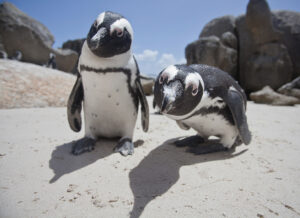A passion for the natural world drives many of our adventures. And when we’re not actually outside, we love delving into the discoveries about the places where we live and travel. Here are some of the best natural history links we’ve found this week.
Five Viking longhouses found in Norway: Archaeologists have discovered five Viking longhouses in Ostfold, Norway. The archeological site, Gjellestad, has been a hotbed of Viking discoveries. In 2018, researchers found a Viking ship at the site. Now, north of the ship, they have found the longhouses.
Archeologists used ground-penetrating radar to locate the Iron Age buildings. The largest is 60m long and 15m wide, making it one of the largest found in Scandinavia. Around the buildings, there were also several burial mounds. “These are important to know about to get a more complete picture of Gjellestad and its surroundings,” said Lars Gustavsen.
Going green
Experts welcome rewilding project in the UK: The UK plans to rewild 300,000 hectares of natural habitat by 2030. Britain is one of the most nature-depleted countries in the world, farming uses over 70% of the land.
Experts have welcomed the plans but note that “we need to make sure we’re seeing this through genuine holistic rewilding.” One worry is the public’s attitude towards rewilding. “People associated it with wolves, bears, and land abandonment,” said Alastair Driver.
Backers hope that the project will restore several ecosystems including woodland, wetlands, and floodplains.

Rewilding projects are underway in the UK. Photo: Shutterstock
Health risks increase as wildfires worsen: Levels of dangerous air pollutants are increasing across the western United States because of wildfires. Scientists found that worsening wildfires have caused the number of smoke and ozone (also called trioxygen) particulates in the air to increase dramatically. If this continues it will create a serious health risk for millions of Americans.
The particulates can travel into lung tissue and cause both respiratory and cardiovascular damage. Ozone inflames airways and makes lungs more susceptible to infection. Researchers discovered that exposure to both pollutants at the same time is disproportionately harmful. “We are expecting these trends to continue given climate change, so the best we can do at this point is to increase awareness and take steps to protect ourselves,” said Dmitri A. Kalashnikov.
Africa’s ‘Great Green Wall’ could have far-reaching climate effects: The ‘Great Green Wall’ is a proposed 8,000km wall of trees. Researchers hope that the trees will stop the Sahara Desert from expanding southwards.
By 2030 the project wants to plant 100 million hectares of trees along the Sahara’s southern edge. Computer simulations predict that the trees would cause rainfall across the Sahel region to double, the average summer temperature in northern Africa to decrease, and the hottest areas in the Sahel to become even hotter.
Scientists also think the Great Green Wall could have a global impact. The West African monsoon would become stronger and shift circulation patterns west. This would impact global climate events such as the El Niño Oscillation.

Ancient sharks attacked each other. Photo: Shutterstock
Shark-on-shark crime
Fossil evidence of an ancient shark-on-shark attack: Millions of years ago sharks hunted other sharks. Sharks are some of the world’s most ferocious predators, and shark-on-shark attacks are not uncommon. However, researchers had not previously found evidence of this behavior in ancient shark species.
Four rare fossils, found by four different people, show the vertebrae of now-extinct shark species. All the fossils had one thing in common, shark bite marks covered the vertebrae. “To find these skeletal elements with bite traces is truly remarkable,” said Victor Perez.
A (relatively) close shave
Kilometer long asteroid will fly by Earth in two weeks: On January 18, an asteroid will zoom past Earth. Stony asteroid (7482) 1994 PC1, is one kilometer long and classed as a potentially hazardous object. If it hit us the consequences would be catastrophic.
Fortunately, calculations show that it will pass by over 1.98 million kilometers away. This is the closest an asteroid will come to Earth for the next 172 years. Robert McNaught discovered the asteroid in 1994, decades of tracking it has allowed for very accurate measurements of the orbit.






